Artist Name
You can click medals to switch between obverse and reverse sides.
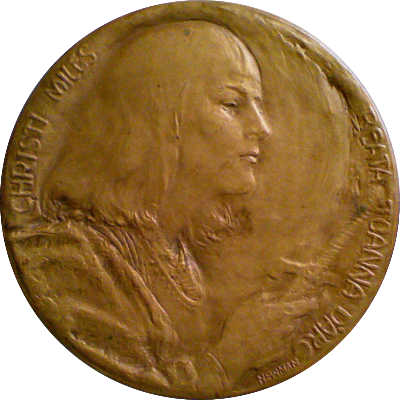
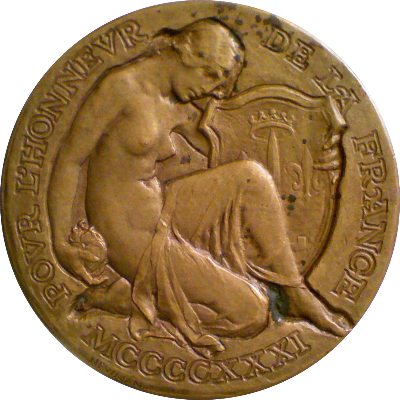
This medal was published in June 1915 as the 12th issue in the Circle of Friends series.
Its obverse bears bust of Joan of Arc r. with cuirass and sword. Around, CHRISTI MILES - BEATA JOANNA D'ARC (soldier of Christ, blessed Joan of Arc); at lower right, NEWMAN
The reverse shows seated semi-nude France holding burning heart and supporting the Arms granted Joan's family by King Charles VII. Incuse legend around, POVR L'HONNEVR DE LA FRANCE (for the honor of France) / MCCCCCXXXI; at lower left, NEWMAN
The medal measures 70mm in diameter and was produced by the Medallic Art Company of New York.
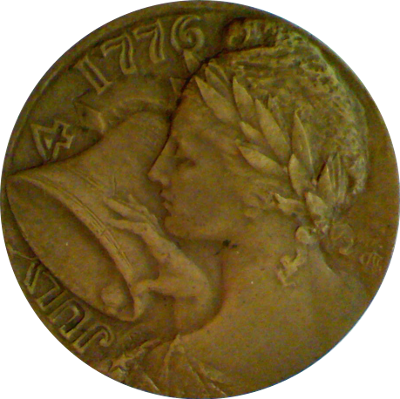
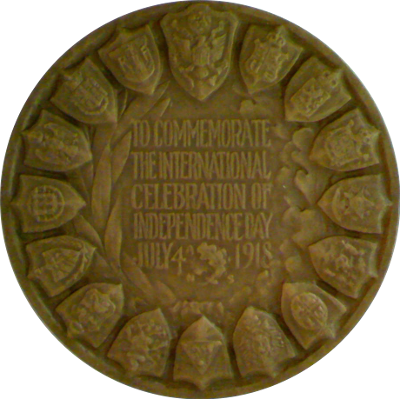
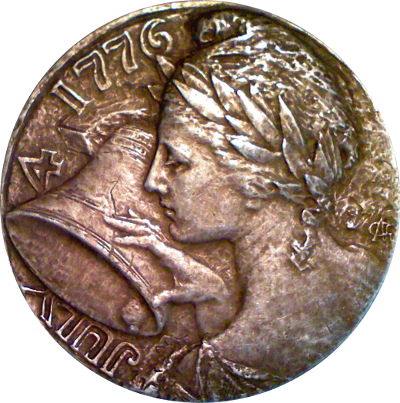
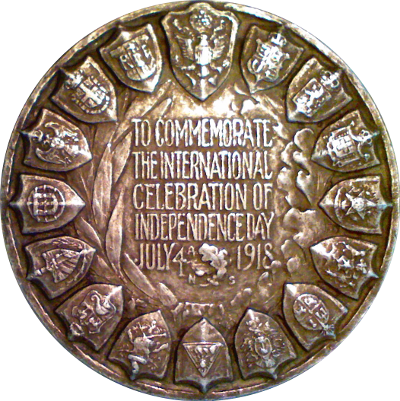
The obverse bears allegorical female lightly touching the Liberty Bell. Around, JULY 4 1776; at right, signed (AGN monogram).
The reverse depicts a circle of shields bearing the arms of the sixteen countries participating in the celebration. In center, TO COMMEMORATE / THE INTERNATIONAL / CELEBRATION OF / INDEPENDENCE DAY / JULY 4 (ANS oak leaves) 1918.
This is the 36th medal issued by the American Numismatic Society. Though dated 1918, the medal was actually issued in 1919 to commemorate the international celebration of the American Independence Day in the previous year. The sixteen nations that had participated in the festivities (other than the United States) were: the United Kingdom, Belgium, Greece, Brazil, Chile, Uruguay, Argentina, Nicaragua, Guatemala, Peru, Cuba, Portugal, Serbia, Italy, and France.
The medal measures 63mm (2.5in) in diameter and was struck in bronze and silver. Only 39 silver and 63 bronze pieces were struck by the Medallic Art Company of New York and made available to ANS members and members of the Mayor's Committee on National Defense.
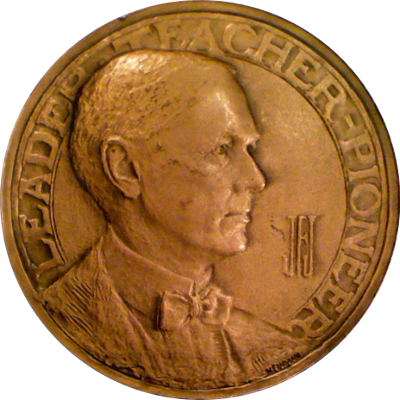
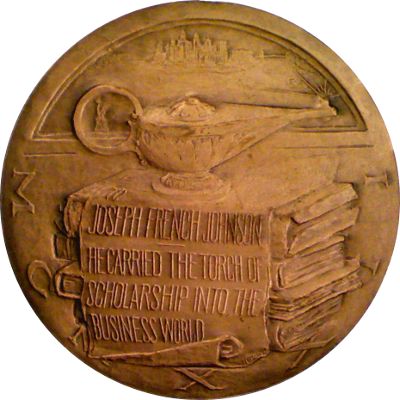
The medal's obverse bears profile r. of Jospeh F. Johnson. Around, LEADER - TEACHER - PIONEER; to right, JFJ; signed by artist, incuse NEWMAN
The medal's reverse bears an oil lamp standing on open scroll dangling from stack of books before view on city's skyline. On scroll, TO / JOSEPH FRENCH JOHNSON / HE CARRIED THE TORCH OF / SCHOLARSHIP INTO THE / BUSINESS WORLD; from left to right around bottom, M C M X X I I
The edge is marked with multiple instances of PAT.OCT.18.92.
Joseph French Johnson was an American economist, journalist, Professor, and Dean of the School of Commerce, Accounts and Finance, New York University, and founding Dean of the Alexander Hamilton Institute in New York in 1909. He eventually became a member of the commission that revised the banking lwas of the State of New York and worked for the National Monetary Commission.
The medal measures 70.3mm in diameter and was struck in bronze by Whitehead-Hoag.
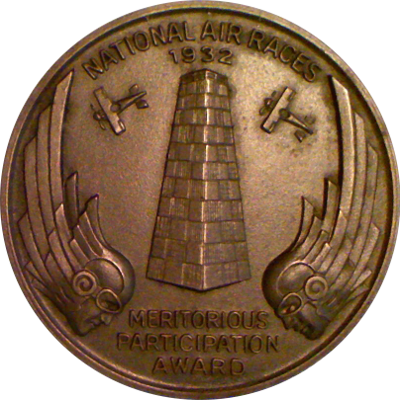
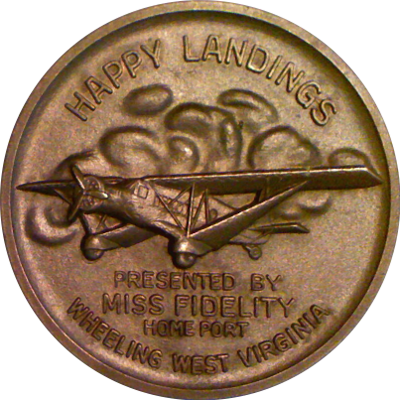
The obverse bears a central pylon flanked by two aircraft and two Art Deco-style winged heads. Above, NATIONAL AIR RACES / 1932; below, MERITORIOUS / PARTICIPATION / AWARD.
The reverse shows a Bellanca P200 plane in front of clouds. Above, HAPPY LANDINGS; below, PRESENTED BY / MISS FIDELITY / HOME PORT / WHEELINGS WEST VIRGINIA.
The Bellanca P200 airbus was built for $45,000 for the Fidelity Investment Company of Wheeling, West Virginia. It was one of nine built by the Bellanca Aircraft Corporation of New Castle, Delaware, and was one of the most advanced and economic commercial airplanes of its day. In 1934 federal regulations prohibited single engine transports on United States airlines, virtually eliminating the airbus' market. In Canada the P200 and its successor, the P300, were used into the 1970's to ferry ore, supplies and the occasional passenger from and to remote northern mining sites.
One of these small medals was awarded to every participant of the 1932 National Air Races held in Cleveland. The winged heads on this medal are reminiscent of Oskar Hansen's better known Olympiad of the Air medal from two years earlier.
The medal measures 36.7mm (1.5in) in diameter and was struck in bronze in an unknown mintage.